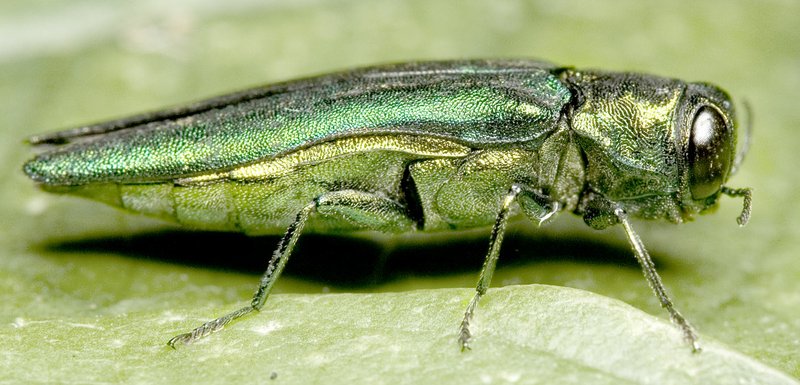WESTSIDE — A pest that has caused the loss of tens of millions of ash trees across the nation was recently discovered in Delaware County in northeastern Oklahoma in an emerald ash borer survey trap set by the USDA Animal and Plant Health Inspection Service and Oklahoma Department of Agriculture, Food and Forestry. The emerald ash borer, a non-native, wood-boring beetle, is a significant threat to ash trees across the state.
"With a number of our neighboring states already dealing with the pest, we knew it was a matter of time before emerald ash borer appeared in Oklahoma," said George Geissler, director, Oklahoma Forestry Services. "We want to make Oklahomans aware of the issue and available options and resources for dealing with this pest."
Oklahoma Department of Agriculture, Food and Forestry will be quarantining all movement of ash wood out of Delaware County because the pest lives under the bark and it can be easily spread if infested wood is moved into other areas.
Treatment options are available but need to be carefully weighed against removal options, looking at financial implications, including the cost of each treatment and the tree value. The rate of spread is impacted by many variables and is difficult to predict at this point, but it also enters into the decision making for communities and individuals. Oklahoma Forestry Services recommends consulting with an International Society of Arboriculture certified arborist if you have questions about your ash trees.
"There are decisions to be made, and we want those decisions to be science-based," said Geissler. "We're offering the best resources available on our website and will keep Oklahomans informed on the progression of emerald ash borer."
Emerald ash borer probably arrived in the United States on solid wood packing material carried in cargo ships or airplanes originating in its native Asia. It was discovered in southeastern Michigan in 2002 and since that time has spread to more than 25 states and Canada. Oklahoma Forestry Services encourages Oklahomans to be on the lookout for emerald ash borer. Here are EAB signs to look for:
Adult EAB - Is a metallic emerald green color and about 1/2-inch long. They are difficult to detect.
Larva - It is a cream color and distinctly segmented. It is easy to spot by peeling back loose ash tree bark.
S-shaped galleries -- After the larvae have matured and exited the tree, distinct s-shaped galleries are left under the bark.
D-shaped very small exit holes are left in the tree.
Crown Decline -- the top 1/3 of the tree typically dies first, then progresses down the tree.
Multiple Trees -- Infestation may include a number of declining ash in the area.
Woodpecker Holes - Woodpeckers love EAB larvae, so woodpecker holes might indicate EAB.
Please notify Oklahoma Forestry Services at 405-522-6158 if you see signs of EAB infestation in ash trees. For more information and resources regarding emerald ash borer, visit www.forestry.ok.gov/eab.
In Arkansas
In Arkansas, notify the Arkansas Forestry Commission at 501-296-1940.
The beetle has been found in Arkansas in both the southern part of the state and in northeastern counties. So far, Benton and Washington Counties have not been included in the listing of counties with the emerald ash borer.
It is illegal to transport certain items from within the quarantine zones to areas outside the zones. According to the Arkansas Department of Agriculture, quarantined items include firewood of any hardwood species, as well as ash tree products including:
• Nursery stock
• Green lumber with bark attached
• Living, dead, cut or fallen logs
• Pulpwood, stumps, roots, branches
• Mulch and composted or uncomposted chips greater than 1 inch in diameter
General News on 10/26/2016

